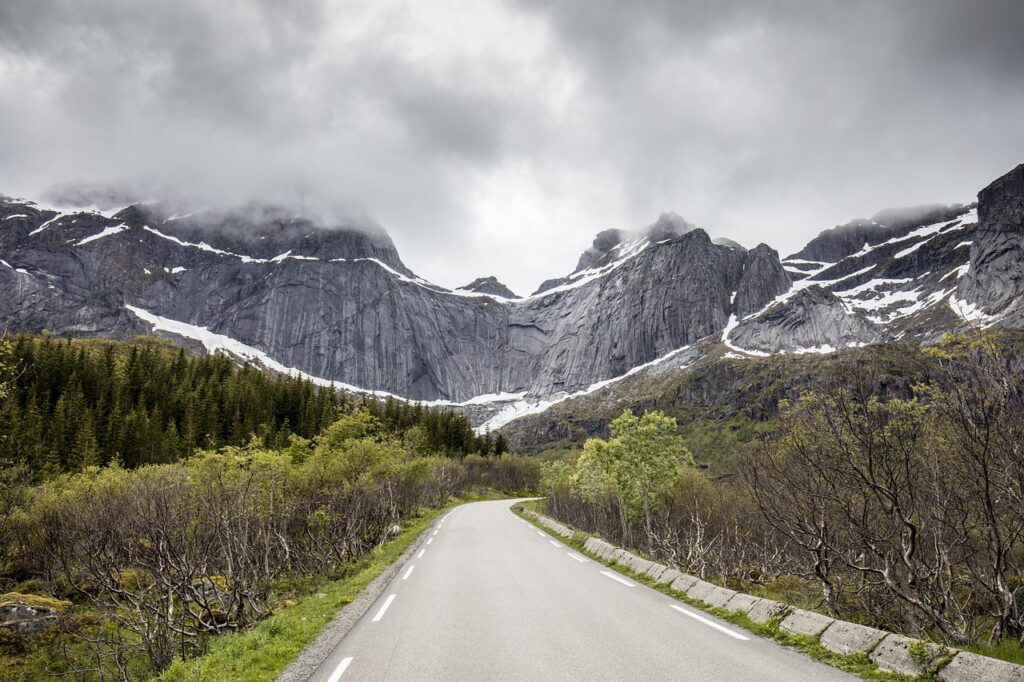Dragons in Norse Mythology | What Dragons Meant to Vikings
In the enthralling realm of Norse myths, where gods, giants, and magical landscapes weave tales of epic proportions, it is only natural for those delving into Nordic folklore to ponder the existence of dragons in Norse Mythology. The truth is, within this captivating tapestry, dragons stand as formidable and mythical entities, adding a layer of intrigue and wonder to the rich narratives of the North. In this article, we embark on a journey to unveil some of the most prominent and legendary dragons that dwell within the pages of Norse Mythology, exploring their roles, symbolism, and the captivating stories that have etched them into the annals of ancient lore. Níðhǫggr | Dragons in Norse Mythology One creature that holds a special place in the tales of Nordic folklore is Níðhǫggr. This dragon, with a name that means “Malice Striker” in Old Norse, plays a unique role in the cosmic drama of Norse myths. Picture Yggdrasil, the enormous world tree that connects all the realms in Norse mythology. Níðhǫggr, the dragon, resides at the roots of this colossal tree. Its existence is like a thread woven into the fabric of the cosmos, and its story reflects a deeper meaning in the narratives of the Norse. Unlike some dragons of legend, Níðhǫggr isn’t a creature of majestic beauty or a guardian of treasures. Instead, it embodies chaos and decay. This dragon, with its insatiable hunger, constantly gnaws at the roots of Yggdrasil, posing a persistent threat to the stability of the entire Norse mythological world. The symbolism attached to Níðhǫggr is profound. It represents the force of malice, a reminder that even in the divine realms of gods and giants, there exists an ever-present danger that seeks to unravel the order meticulously maintained by the cosmic tree. Jörmungandr | Dragons in Norse Mythology Often referred to as the Midgard Serpent, its story is intricately entwined within the narratives of Norse myths. Imagine a serpent of immense size, so vast that it encircles the entire Earth. This is Jörmungandr, a creature dwelling in the vast oceans that border the lands of humans, a serpent of both wonder and foreboding. The presence of Jörmungandr is a testament to the grandeur and peril that characterize the realms of Nordic folklore. According to the stories, this serpent is a child of Loki, the trickster god, making it a sibling to other mythical beings like Fenrir, the monstrous wolf. The symbolism of Jörmungandr extends beyond its physical enormity. Its coiled form, spanning the realms, creates a sense of awe, representing the interconnectedness of the Norse mythological world. The serpent’s presence is entwined with the fate of gods and the impending cataclysmic event of Ragnarök. In the narratives of Dragons in Norse Mythology, Jörmungandr plays a pivotal role in the events leading up to Ragnarök. Its emergence from the depths signals the beginning of the end, as foretold in the prophecies of Norse seers. The epic battle between Jörmungandr and Thor, the god of thunder, is a central theme in these apocalyptic tales. Fafnir | Dragons in Norse Mythology Fafnir isn’t just your average dragon—it’s a creature born from the intricate twists of greed and transformation. Picture a dwarf named Hreidmar and his three sons, Fafnir being one of them. Their lives take a drastic turn when they come into possession of a cursed treasure, one that sparks a chain of events leading to Fafnir’s draconic fate. Driven by an insatiable lust for gold, Fafnir transforms into a dragon, his heart consumed by the very riches he sought to hoard. In this dragon form, Fafnir guards the cursed treasure with a fierce and possessive demeanor, becoming a symbol of both greed and the consequences it entails in the world of Norse myths. The legend of Fafnir gains further complexity with the involvement of Sigurd, a hero destined to confront this dragon. In a riveting encounter, Sigurd slays Fafnir, marking the end of the dragon’s tale but opening a new chapter in the epic of Norse myths. Fafnir’s story, unlike some dragons of legend, isn’t merely about a creature hoarding treasures. It’s a narrative that explores the transformative power of greed and the profound consequences it can have on both individuals and the mythological world. Goin and Moin | Dragons in Norse Myths Goin and Moin, also known in Old Norse as Góinn and Móinn, are two serpents in Norse mythology that reside beneath the World Tree Yggdrasil. Alongside other serpents and the serpent-like dragon Nidhöggr, they form a captivating group of beings within the realm of Norse myths. The Grímnismál poem mentions Nidhöggr, Goinn, and Moinn, as well as four or five other serpents living beneath the roots of the World Tree, where they gnaw at them. Grafvitnir is named as their father. Snorri Sturluson, a significant transmitter of Norse myths, quotes this passage in his Prose Edda and adds that there are so many serpents in Hvergelmir by Nidhögg that no tongue can count them. The common residence of these serpents is beneath Yggdrasil, and Snorri Sturluson specifies the spring Hvergelmir as their exact location. According to his cosmogonic concept, this spring is situated beneath one of the roots of Yggdrasil. The Universality of Dragons in World Mythologies Comparing the existence of dragons in Norse mythology with other mythologies reveals a fascinating universality. Dragons, appearing in various forms, transcend cultural boundaries—whether as the Chinese Long, the Indian Nāga, or the Western European dragons. Despite variations in specific characteristics and roles, the presence of these mythical beings emphasizes a shared human fascination with these majestic and often fearsome creatures. In the contemporary era, dragons persist in popular culture, bearing witness to their timeless allure. From J.R.R. Tolkien’s iconic Smaug in Middle Earth to the majestic Drogon in “Game of Thrones,” dragons continually captivate the imagination of audiences globally. Their symbolic significance has expanded, incorporating themes of power, transformation, and the perpetual struggle between good and evil. Concluding our exploration of Dragons in Norse Mythology, we acknowledge these
Dragons in Norse Mythology | What Dragons Meant to Vikings Read More »









